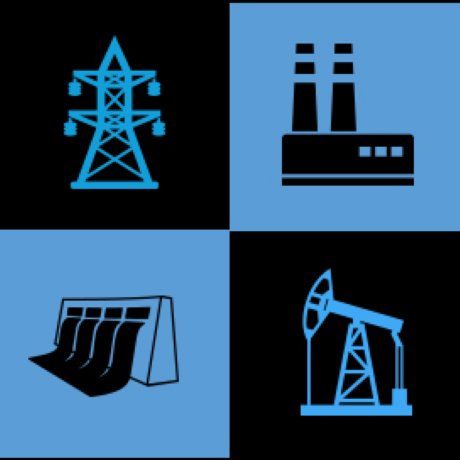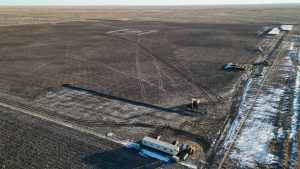A transformative plan to supply reliable power to 17 Ontario First Nations communities reaches the new year at a critical stage, with proponents hoping to overcome funding and environmental assessment hurdles in 2017 as sights are set on the start of construction next year.
The megaproject, costed at $1.35 billion, has the potential to dramatically improve living conditions for the underserviced First Nations who will benefit, said Scott Hawkes, president of project owner Wataynikaneyap Power.
New transmission lines will replace unreliable and expensive diesel power generation, enabling much-needed infrastructure growth and social development to take place, he added.
"There is a business case to connect the remotes, aside from the urgent need that these communities have," said Hawkes. "When you visit a First Nations community you see boil water advisories because they do not have the electrical infrastructure, they have capacity restrictions on their existing generation which means that they can’t build new homes, and there are obviously the social costs."
FortisOntario joined the limited partnership in December, purchasing the holdings of Renewable Energy Systems Canada Inc. (RES). FortisOntario’s share of Wataynikaneyap Power sits at 49 per cent, with 22 First Nations communities holding the remaining 51 per cent interest.
Hawkes, who is also president and CEO of FortisOntario, is joined in direction of the project by Margaret Kenequanash, executive director of the Shibogama First Nation Council and chair of Wataynikaneyap Power.
The project will proceed in two phases, with the $200-million phase one consisting of reinforcing the existing grid to Pickle Lake, located about 350 kilometres north of Thunder Bay. The existing line is over 70 years old and prone to long-lasting outages, project consultant PWC wrote in a report that laid out a cost justification for the transition from diesel.
The proposed timetable for this phase sees leave to construction obtained from the Ontario Energy Board by the end of 2017, the start of construction in early 2018 and completion by 2020. The plan is for the 230 kilovolt preliminary proposed corridor to run from Dinorwic, south of Dryden, to Pickle Lake, approximately 300 kilometres away.
Phase two, costed at $1.15 billion, will see new transmission capacity built north of Pickle Lake and Red Lake servicing the 17 priority communities, with more to come after that. The preliminary proposed corridor north from Red Lake will run 626 kilometres on 115 kilovolt and 44 kilovolt transmission lines while the corridor north of Pickle Lake will have similar capacity and cover 895 kilometres.
"We’re looking at a construction window on the remotes of four years, and part of the explanation is that you have to wait for the winter roads to bring in the heavy equipment to build these lines," said Hawkes. "Some of the tribal councils have plans for all-season roads but our plan is independent of that. If need be we will use winter roads to construct the lines."
PWC’s study indicated that over the period of 2021 to 2060, the savings from switching from diesel to Ontario’s power grid would be approximately $1 billion, given that the current cost of diesel generation is $43 million per year and growing.
Financing will include a combination of equity by the partners, Fortis and the 22 First Nations, and project debt financing. The Ontario Energy Board will insist on confirmation of revenue sources through the upcoming leave to construct approval process. It is proposed that phase one funding will come from provincial ratepayers through the Uniform Transmission Rate, and phase two funding is expected to come from a combination of provincial and federal contributions.
One early build, ahead of the rest of the project, to service the community of Pikangikum, will be financed by Indigenous and Northern Affairs Canada. The province is on board, with its initial commitment identified in its 2010 Long Term Energy Plan and reconfirmed in 2013. But, says Hawkes, the federal funding framework has not been nailed down.
Environmental approvals are being sought under the Ontario Environmental Assessment Act and the Canadian Environmental Assessment Act.
Besides RES and PWC, other contributors to the early stages of the project have included Goldcorp, doing pre-development work; Torys, project counsel; and Golder, with environmental assessment consulting.
The First Nations have been heavily involved in government relations, said Hawkes. Proponents foresee significant economic development opportunities for residents of the First Nations community, with Hawkes pointing to the personal and skills development associated with construction in the communities, then opportunities for home building and community infrastructure upgrades, and beyond that, exploration of resource development, new power projects and other enterprises.
"The transmission line will be the backbone for further infrastructure building," said Hawkes.
Hawkes speaks of the economic and labour opportunities for the First Nations shareholders as "capacity building." Working in similar situations in Western Canada, Fortis has employed a skills-builder program where First Nations work alongside contractors.
"What we are planning to do is to have that capacity built within the communities," said Hawkes. "To have community members there to be part of the construction, to be part of the construction support, the camps, the food should come from the First Nations."











Recent Comments
comments for this post are closed